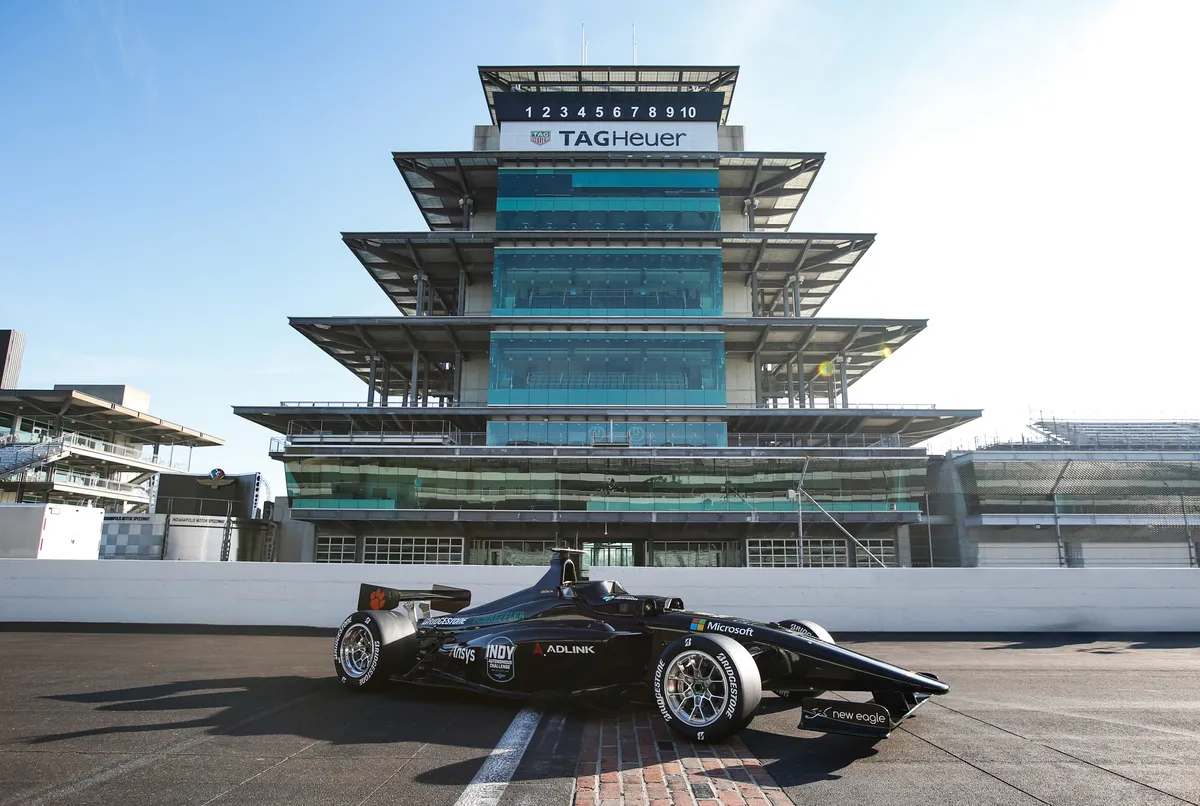What’s the difference between IndyCar and Formula 1? ATRL’s Natasha Warcholak-Switzer unwraps the main differences between the two popular single-seater racing series.
Even though the two single-seater racing series have risen in popularity in both the USA and around the world, their drivers, teams and racing schedules give both series their own unique appeal to many racing fans. Here are the main differences between IndyCar and Formula 1.
Origins and History
IndyCar: A single-seater racing series that’s based out of Indianapolis, Indiana; IndyCar got its name from the iconic Indy 500, which takes place at Indianapolis Motor Speedway each year. This race, known as the Greatest Spectacle in Motorsports, has been running since 1911 and still waves the checkered flag at the same Yard of Bricks where it all began over 100 years ago.
Formula 1: A single-seater racing series that’s based out of London, United Kingdom; even though races started to form in the early 1900’s, Formula 1 was first recognized as a motorsports series in 1946. The series still races each year at Silverstone, known as the home of F1, where the first driver’s championship took place in 1950.

IndyCar Autonomous Challenge (Photo via Indy Star)
The Size of the Grid
IndyCar: Currently there are 11 teams competing in the IndyCar series and 34 drivers; in 17 races across the season, teams fight for points each race weekend in the hopes of capturing the championship. Like Formula 1, Indy has a driver’s championship, but no Constructors championship.
Formula 1: Currently there are 10 teams competing in Formula 1 and 20 drivers; all drivers are full-time, unlike Indy which contracts drivers to do marquis races like the Indy 500 or to race specifically on ovals. Teams compete over a 23-race season for the Drivers Championship and the Constructors Championship.
The Location of Races
IndyCar: Indy races on a mix of city circuits, road courses and ovals; the series travels far and wide but only races in America. In some ways, it’s just as international as F1 – in 2023, 11 different countries were represented on the grid.
Formula 1: F1 only races on city circuits and road courses; the series does not race on ovals. Over the course of the 2023 season, F1 traveled around the world to 20 different countries and five continents, making it one of the most well-known sports in the world.

Max Verstappen on the podium at the USGP (Photo via Los Angeles Times)
How Budget Can Impact Performance
IndyCar: In Indy, teams have either a Honda V6 or a Chevrolet V6 engine – the engine is leased from either company and as of 2021 cost around $1.5-2 million USD. Since there’s less customization on engines compared to F1, other areas of the budget like the chassis and maintenance become more important. Less variation in budget means that teams can start the season on a more even footing, making top races like the Indy 500 more competitive overall.
Formula 1: In F1, the engine will depend on the team’s budget and constructor. The 2023 Constructor’s Champion Red Bull for example, invested an estimated $10.6 million USD into their season-winning engine from Honda-Red Bull Powertrains. Each team may invest a different amount depending on their budget and their place in the previous year’s championship – the top team got an estimated $140 million in 2023, compared to the 10th place team which earned an estimated $60 million. With more than double the budget of the last place team, it’s easy to see that team placement and budget can go a long way in determining outcomes for the season.
Top Speed
So which is faster, an IndyCar or a Formula 1 car? Technically, IndyCars have higher top speeds, reaching a blistering 240 mph on straightaways. But Formula 1’s 220 mph top-speed comes on road courses and city circuits, making it a less straightforward comparison with Indy’s Indianapolis Motor Speedway and the other oval circuits the series visits throughout the season. With Formula 1 adding more courses like Jeddah and Las Vegas, we may see F1 cars at even higher speeds in the coming seasons.
ABOUT THE AUTHOR

Related Articles
Josef Newgarden, Team Penske and the Push to Pass Scandal: What IndyCar Fans Should Know
ATRL’s Natasha Warcholak-Switzer details what you need to know about Team Penske’s Push to Pass violation, with perspectives from around the paddock.
How Formula 1 Tackles Mental Health Stigma in the Sport and Beyond
In the second piece of a series, ATRL’s Ayesha Ninan explores Formula 1’s evolving approach to mental health, highlighting systemic changes and impactful partnerships such as McLaren’s collaboration with the mental health charity Mind.
Accelerating Awareness of Mental Health in Motorsport
In this three-part series, ATRL’s Ayesha Ninan explores Formula 1’s approach toward destigmatizing mental health. The series details the sport’s journey from neglecting mental well-being to integrating enhanced support systems for its drivers and teams, highlighting individual experiences and broader cultural shifts within the high-pressure environment of Formula 1 racing.
Stay Up to Date With The Latest News & Updates
Interested in Writing for ATRL?
Contact us now! Fill out the form below and wait for an email from us to get started.
Join Our Newsletter
Subscribe to updates when we post a new article!
COMING SOON!
Follow Us
Follow us on Twitter and Instagram @ATRacingLine




Recent Comments